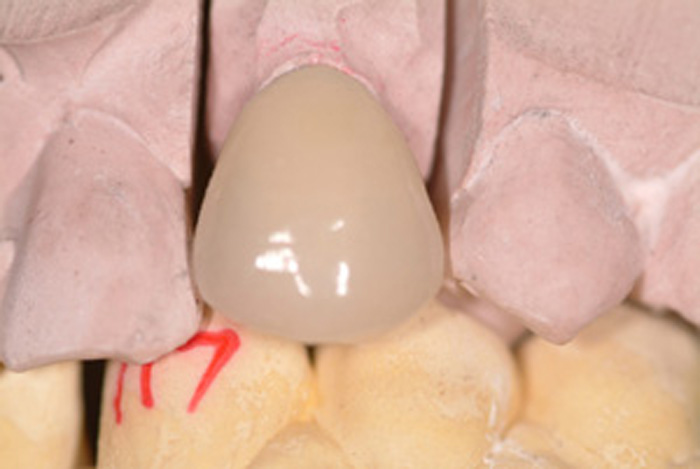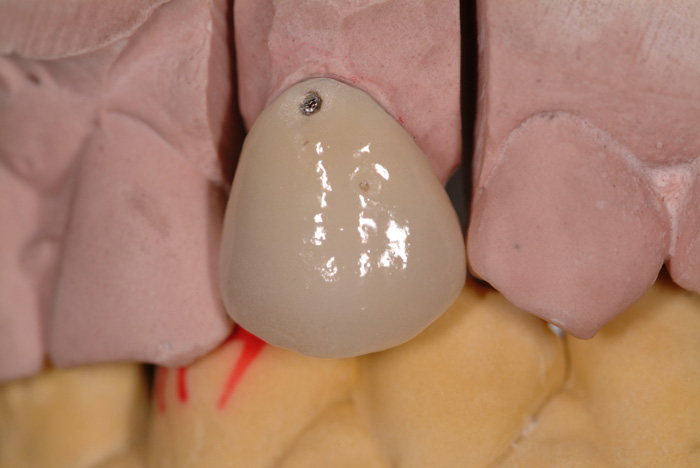Forums › Erbium Lasers › General Erbium Discussion › Cutting Porcelain with the Waterlase
- This topic is empty.
-
AuthorPosts
-
Glenn van AsSpectatorHi folks: I am in another discussion with someone on another board who insists that the Waterlase can etch porcelain.
I am almost positive that my Continuum cannot do that.
Can someone verify for me that the Waterlase is effective in etching porcelain, and someone else please tell me that their Continuum cant.
Mark……..does your waterlase etch porcelain. If so can you send me a picture of this.
Thanks, it is the first time that I have heard of a difference in cutting ability between the Waterlase and the Continuum. Heck if it does effectively cut porcelain I may have to consider why one does and the other doesnt. Perhaps there is something different in the mechanism of action ………..GRIN………..hard for me to believe!
Thanks guys…..
Glenn
2thlaserSpectatorGlenn, Actually I was able to REMOVE 6 porcelain veneers with the Waterlase. I am not sure that it “etches” porcelain, but I read the thread between you and the “other guy” and I have a old PFM just waiting tomorrow for me to try it on, and take a photo of for you. Let’s see if he’s right ok? I can’t honestly say I etched the porcelain, BUT the hydrokinetics, did fracture the porcelain and get underneath it to lift it safely and effectivly off the tooth, without doing ANY cutting of the underlying tooth structure. It was really cool, I show it in my lectures on Laser Veneers.
Mark
Glenn van AsSpectatorFair enough……..I would love to see it. I dont think I can do that with the Continuum.
Glenn
2thlaserSpectatorHere are the veneer cases, 2 pics, the crown I “etched” is coming, with explanation. I don’t think these etch, but Bob Gregg says that the water gets underneath the porcelain, and I believe that is what happens with the veneers. It creates small microfractures, then the porcelain just comes right off. The crown was different, and I will explain that one when I post it in a few minutes, I have another patient to go see!
Mark
[img]https://www.laserdentistryforum.com/attachments/upload/MVC-025F.JPG[/img][img]https://www.laserdentistryforum.com/attachments/upload/MVC-026F.JPG[/img]
2thlaserSpectatorHere are the PFM pictures, the first one is before, obviously, the second is after. A large piece of porcelain blew off near the gingival, but you can see other areas where the porcelain was affected/removed. Now, here is a question I have for all of you. I am not well versed in the types of porcelain out there. Is there metallic fragments in some porcelain? When I removed the veneers, there was NO sparking/arcing, but with the PFM, there was arcing and sparking during the process. If there is a difference, that might be why. I will talk with my lab as well. Sorry for my ignorance to the materials issues with porcelain, but I want to discern these details. What do you all think?


Thanks,
Mark
2thlaserSpectator
Here is the second image. Sorry, it didn’t seem to upload the first time.
Mark
2thlaserSpectatorJust so you know, I sacrificed a couple of tips on that crown!!!! When it arcs/sparks, usually that means the tip is gone, and voila, there it was! Sacrificed for the sake of Laser Dentistry!

Mark
AnonymousGuestQUOTEQuote: from 2thlaser on 3:47 pm on Nov. 18, 2002
Just so you know, I sacrificed a couple of tips on that crown!!!! When it arcs/sparks, usually that means the tip is gone, and voila, there it was! Sacrificed for the sake of Laser Dentistry!
MarkMark, you’re not the only one – I did a little arcing and sparking with mine on a PFM also. After doing it though, I wondered why it surprised me a little, when after all I was directing the beam at something highly reflective.I’ve done the same thing removing old composite that had quartz in it so why would a PFM be different?
2thlaserSpectatorMy initial thoughts are this…IF the laser ENERGY is traveling THROUGH the porcelain, we are getting reflection back to the handpiece, spark. Another theory, is I know that there are oxides and other bimetals in PFM’s not contained in Porcelain veneers (Empress), to help with the coefficient of thermal expansion of the coping to the porcelain, keeping that bond intact between them. These are my only theories thusfar. Now, I know Bob, and Glenn will hopefully come up with other reasons, this shall be interesting………
Mark
Glenn van AsSpectatorHi there Mark……..
I have NO idea what is happening here.
WHat were your settings , how long did it take you and with or without water.
I will try this tomorrow on a crown……….
Thanks alot………..
I am stumped but dont think my Continuum can do that.
Maybe it is the porcelain………who knows.
glenn
2thlaserSpectatorHi All,
Sorry, I guess I did forget to put my settings down. I used 6W 90%air 76%water, pedal to the metal. Timewise, it took me about 10-15 seconds to produce those results. On the veneers, same thing, very quick, high settings, although I defocussed for anesthetic effect beforehand. I hope I haven’t left anything out. Please forgive me!!
Mark
lagunabbSpectatorA primary ingredient in porcelain is Kaolinite which contains Aluminum. From a U of Wisconsin site:
Kaolinite is a clay mineral with the chemical composition Al2Si2O5(OH)4. The basic building blocks are layers of silica tetrahedra (with four apical O) and layers of alumina octahedra (with two apical O shared with silica and four apical OH), in a 1:1 relationship. The unit cell (5.14 Å by 8.93 Å by 7.37 Å) repeats in the x and y directions to form extensive sheets in the xy plane and stacks of sheets in the z direction formed by hydrogen bonds (HO–H) between OH of the alumina of one sheet and O of the silica of the next.
2thlaserSpectatorCool, thanks Ray! Great info.
Mark
Glenn van AsSpectatorAbsolutely fantastic Ray………..I know its not in all porcelains though as not all porcelains cut with my Continuum. In fact I think I will keep a list of which ones do and which ones dont.
How about we do the same with the Biolase.
Glenn
2thlaserSpectatorwill do Glenn, thanks as well.
Mark -
AuthorPosts
